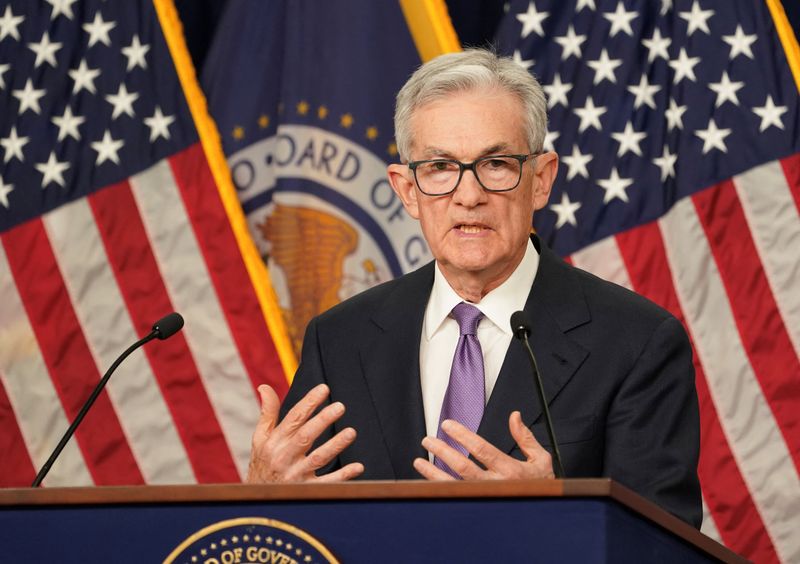By Michael S. Derby
NEW YORK (Reuters) – Federal Reserve Chair Jerome Powell said on Wednesday that central bank officials have yet to decide when they will end their balance sheet reduction effort even as they are now actively contemplating interest rate cuts next year.
“We are not talking about altering the pace of Q.T. right now,” Powell said at his press conference following the Fed’s policy decision. Q.T. refers to quantitative tightening, or the contraction of the Fed’s bond-holdings.
Powell spoke after a Fed meeting that kept interest rates steady at between 5.25% and 5.5%, with officials penciling in three quarters of a percentage points’ worth of cuts in the new year. The Fed, which targets 2% inflation, is weighing lower rates due to abating inflation pressures.
The Fed has been trimming its balance sheet since last year in an effort to complement rate hikes. The Fed has been shedding just shy of $100 billion per month in Treasury and mortgage securities, taking its holdings from just shy of $9 trillion in the summer of last year to $7.7 trillion now.
The Fed bought bonds aggressively to stabilize markets and stimulate growth during the pandemic. Taking liquidity back out is part of its process of returning monetary policy to a normal footing.
The challenge for markets is that even as rate cuts loom, the Fed’s plan to shrink holdings until financial sector liquidity is ample enough for it to retain full control over short-term rates does not say much about when this process might end.
At the press conference, Powell noted that interest rate policy and balance sheet actions are operating independently under most scenarios, which means the Fed could lower rates but still press forward on shrinking its balance sheet.
Many in markets are looking to the Fed’s reverse repo facility as a barometer of the fate of the Q.T. process. This facility, which takes in cash largely from money market funds, is seen as a proxy for excessive liquidity, and has fallen from $2.6 trillion at the end of 2022 to $823 billion Wednesday. Some suspect that when reverse repos hit zero, as some in the Fed reckon is likely, that will be time for the Fed to end Q.T.
That Q.T. can go on at a time of rate cuts owes to the reason why monetary policy might ease. Fed rate cuts next year appear to be a bid to keep policy at a steady potency at a time when inflation is falling.
(Reporting by Michael S. Derby; Editing by Leslie Adler and David Gregorio)
